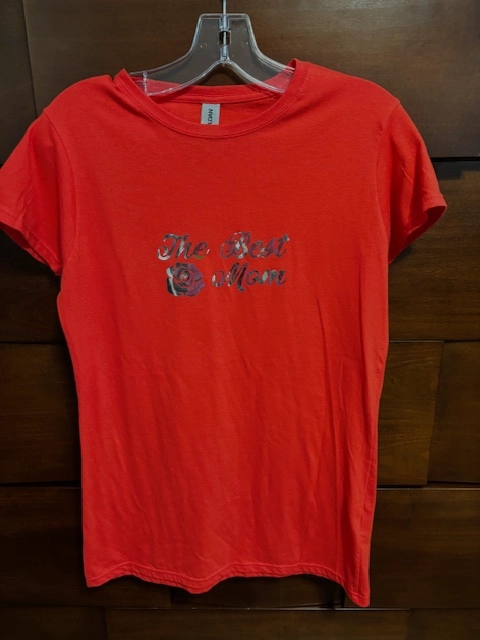Classy Monogramming on Towels for a Touch of Deluxe
Classy Monogramming on Towels for a Touch of Deluxe
Blog Article
The Art of Custom-made Embroidery: Unlocking the Tricks to Creating Special and Remarkable Designs
The keys to developing personalized needlework layouts that astound the eye and leave a long-term impact lie in a fragile balance of technique, creativity, and interest to detail. As we dive right into the world of customized embroidery, we discover the nuanced interplay in between thread selection, sew intricacy, and style personalization that elevates a plain garment to a work of art.
Picking the Right Needlework Threads
When picking needlework threads, what key elements should you consider to make sure the very best results for your custom styles? The option of needlework thread is important in identifying the final outcome of your stitched layout. Among the primary considerations is the material of the thread. Different products such as cotton, polyester, rayon, and silk supply differing degrees of luster, sturdiness, and appearance. It is necessary to choose a thread product that complements the fabric you are embroidering on and lines up with the preferred look of the design.
Thicker threads can add measurement and structure to your style, while finer threads are ideal for detailed information and little text. In addition, thinking about the color fastness and washability of the string is critical to make certain that your personalized layouts preserve their quality and vibrancy over time.
Exploring Different Stitch Techniques
To dive right into the world of 'Discovering Different Stitch Methods', one should comprehend the intricacies and subtleties that each stitching technique brings to the art of embroidery. Different stitch methods not only include aesthetic rate of interest however likewise add to the general appearance and dimension of the layout. One prominent stitch method is the satin stitch, which entails closely stuffed parallel stitches to create a smooth and shiny surface area, ideal for filling up in forms and creating strong details.
On the various other hand, the backstitch is a functional technique commonly used for detailing and including fine information. It entails stitching backwards to develop a strong line of embroidery. Furthermore, the French knot stitch includes a responsive element to designs, excellent for producing distinctive accents like blossom facilities or decorative touches.
Checking out different stitch methods enables embroiderers to have fun with light, darkness, and deepness within their styles, elevating the visual appeal and creative high quality of their needlework projects. By understanding numerous sewing approaches, one can unlock endless possibilities for producing special and remarkable personalized needlework pieces.
Incorporating Personalized Style Aspects
Having actually checked out the ins and outs of various stitch techniques such as the satin stitch, backstitch, and French knot, the emphasis currently moves in the direction of integrating individualized layout elements in customized embroidery projects. Personalized layout elements play an important function in making embroidery projects truly special and unforgettable. One way to incorporate customization is by adding initials, names, or substantial dates to the style. This not only includes a tailored touch however also boosts the emotional value of the needlework piece.
Another means to integrate personalized layout elements is by including signs or motifs that hold unique meaning to the recipient or mirror their interests and personality. Incorporating a favored blossom, pet, or hobby-related icon can make the embroidery layout more significant and customized. Furthermore, picking colors that resonate with the recipient or straighten with the intended style can even more enhance the customization of the needlework project.
Grasping the Art of Shade Coordination

One trick aspect of shade control is comprehending shade theory. This consists of recognizing exactly how various colors engage with each various other, the feelings they communicate, and just how they can be combined to develop visually attractive styles. By applying shade concept principles, embroiderers clothing alterations near me can produce unified color palettes that boost the overall appearance of the layout.
Additionally, taking note of comparison is crucial in shade coordination. Using contrasting shades can aid certain elements of the layout pop, improve clarity, and produce an aesthetically dynamic embroidery item. By grasping the art of shade control, embroiderers can elevate their designs and produce remarkable pieces that reverberate with customers and visitors alike.
Enhancing Texture With Advanced Embroidery Stitches
French knots, as an example, are ideal for including small, increased dots to your style, resembling the look of beads or producing a distinctive surface area. Bullion knots, on the various other hand, can be perfect fit alterations made use of to create twisted, ropelike elements that add a lavish feel to the needlework. Seed sewing entails little, scattered stitches that can complete locations with a speckled texture, while turkey work produces fluffy, dimensional accents similar to pet fur or foliage. Trying out these innovative needlework stitches permits you to press the borders of typical embroidery and develop absolutely unique and aesthetically enticing appearances in your layouts.
Conclusion
Finally, the art of custom embroidery involves a mix of selecting the best threads, discovering numerous stitch techniques, including tailored style elements, mastering shade control, and boosting structure with advanced stitches. By recognizing and carrying out these crucial elements, embroiderers can create distinct and memorable styles that showcase their creative thinking and skill. Needlework lovers can unlock the tricks to producing gorgeous and custom items that stand out and leave a long-term perception.
Report this page